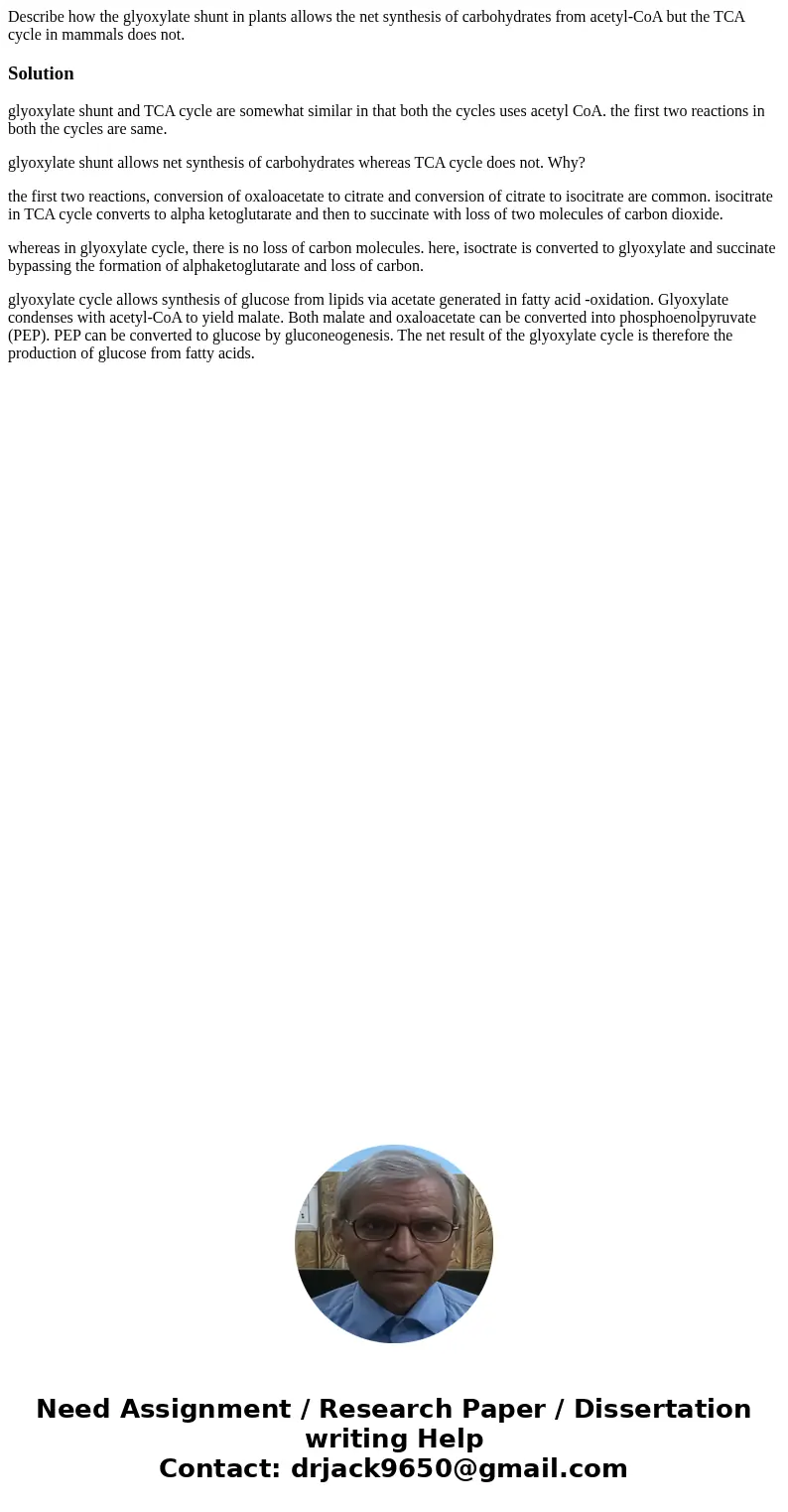Describe how the glyoxylate shunt in plants allows the net s
Solution
glyoxylate shunt and TCA cycle are somewhat similar in that both the cycles uses acetyl CoA. the first two reactions in both the cycles are same.
glyoxylate shunt allows net synthesis of carbohydrates whereas TCA cycle does not. Why?
the first two reactions, conversion of oxaloacetate to citrate and conversion of citrate to isocitrate are common. isocitrate in TCA cycle converts to alpha ketoglutarate and then to succinate with loss of two molecules of carbon dioxide.
whereas in glyoxylate cycle, there is no loss of carbon molecules. here, isoctrate is converted to glyoxylate and succinate bypassing the formation of alphaketoglutarate and loss of carbon.
glyoxylate cycle allows synthesis of glucose from lipids via acetate generated in fatty acid -oxidation. Glyoxylate condenses with acetyl-CoA to yield malate. Both malate and oxaloacetate can be converted into phosphoenolpyruvate (PEP). PEP can be converted to glucose by gluconeogenesis. The net result of the glyoxylate cycle is therefore the production of glucose from fatty acids.

 Homework Sourse
Homework Sourse